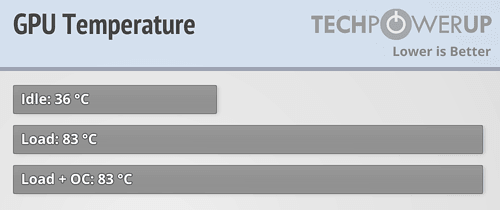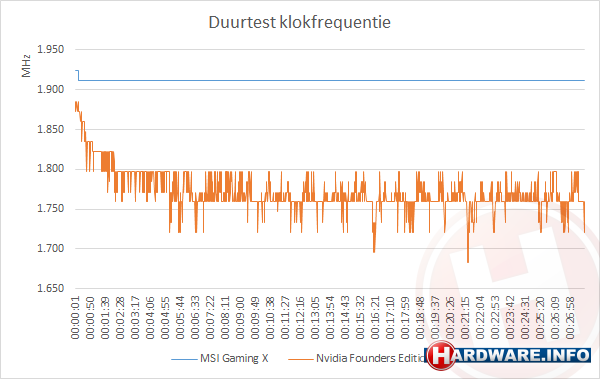I've been putting together a new build recently and always planned to water cool. I've done it before, not a big deal. Then I realized...everyone seems to be getting pretty darn good temps on air. If I get a decent air flow case...should I even bother water cooling a pair of 1080's? I haven't actually used a 1080 yet, so it's kind of hard for me to say. I need some advice before pulling the trigger on water cooling, or keeping the 1080's on air and going closed loop for the CPU. Thanks.
do GTX 1080's even need to be watercooled?
- Thread starter FrogPantsFan
- Start date
You are using an out of date browser. It may not display this or other websites correctly.
You should upgrade or use an alternative browser.
You should upgrade or use an alternative browser.
Solution
if you go reference (founders) and want to overclock, then a water cooling system might not be a bad idea, the card will start to drop its boost under high load. the aftermarket cards with better cooling really do not need a water block unless you really want to OC, but it seems most aftermarket 1080s will not OC past 2100MHz regardless, so water cooling is pointless.
if you go reference (founders) and want to overclock, then a water cooling system might not be a bad idea, the card will start to drop its boost under high load. the aftermarket cards with better cooling really do not need a water block unless you really want to OC, but it seems most aftermarket 1080s will not OC past 2100MHz regardless, so water cooling is pointless.
Do they need to be water cooled ? Depends... every FE card suffers from thermal throttling. If you are content to have a card that has its performance reduced even at stock settings, then no, it doesn't need to be water clocked. Options:
a) Buy a MSI Seahawk 1080 EK X
b) By a non-reference card
You will undoubtedly see posts saying that the FE cards OC just as far is the non-reference cards. In this regard:
a) That's not correct
b) How high you can set the card at idle isn't really the point is it. It's how high boost clocks can take you.
c) Looking at GPU-Z and posting your max boost clock is not an indicator of performance. It's what it can maintain ... well unless stuttering is something you find acceptable.
Let's look at what the reviews tell us:
https://www.techpowerup.com/reviews/NVIDIA/GeForce_GTX_1080/31.html
https://www.techpowerup.com/reviews/MSI/GTX_1080_Gaming_X/28.html
FE Card

Non-reference card

a) Ya want the card whose fans turn off in idle of the ones that don't ?
b) Ya want the card that exceeds the throttling point and reduces clock speeds, or the card that stays 10C below it ?
c) Ya want a card that hist 37 dbA or one that comes in about 60% as loud at 31dbA ?
So, if you don't want throttling, then you can but a FE card, pay $100 more for a water cooled one or buy a non-reference card for the same price as a FE card.
Ok that's one source.... lets see what else we got.... hardwareinfo does throttling tests. Let's go to videocardz site who posted an english translation
http://videocardz.com/60838/msi-geforce-gtx-1080-gaming-x-is-much-better-than-founders-edition

Let's look at that graph... the orange line is the FE 1080. We see that card unable to maintain a stable clock, bouncing from 1670 to 1790 MHz. The blue line which is a non-reference card is able to maintain a pancake flat 1910 MHz..
Again, which card you want ?
a) The one that maintains 1910 Mhz or the one that throttles down to 1670 ?
b) The one that maintains a temp of 67-68C or the one that sits at 83C all the time ?
c) The one whose fps stays a solid or the one that stutters as the MHz fluctuates up and down ?
What did hardwareinfo have to say about this ? Not the first paragraph hits the heart of the argument about "Oh the FE card clocks just fine" with w pretty big stake.
a) Buy a MSI Seahawk 1080 EK X
b) By a non-reference card
You will undoubtedly see posts saying that the FE cards OC just as far is the non-reference cards. In this regard:
a) That's not correct
b) How high you can set the card at idle isn't really the point is it. It's how high boost clocks can take you.
c) Looking at GPU-Z and posting your max boost clock is not an indicator of performance. It's what it can maintain ... well unless stuttering is something you find acceptable.
Let's look at what the reviews tell us:
https://www.techpowerup.com/reviews/NVIDIA/GeForce_GTX_1080/31.html
https://www.techpowerup.com/reviews/MSI/GTX_1080_Gaming_X/28.html
FE Card

Non-reference card

Idle temperatures [on the reference card] are excellent, which is no wonder since the fans don't stop in idle. During gaming, the card goes above 82°C, which results in lower clocks due to Boost 3.0; see our Boost 3.0 Analysis for more details.
Idle temperatures [on the non-reference card] are excellent even with the fans turning off in idle. During gaming, the card also runs much cooler than the reference design, which avoids clock throttling above 82°C.
a) Ya want the card whose fans turn off in idle of the ones that don't ?
b) Ya want the card that exceeds the throttling point and reduces clock speeds, or the card that stays 10C below it ?
c) Ya want a card that hist 37 dbA or one that comes in about 60% as loud at 31dbA ?
So, if you don't want throttling, then you can but a FE card, pay $100 more for a water cooled one or buy a non-reference card for the same price as a FE card.
Ok that's one source.... lets see what else we got.... hardwareinfo does throttling tests. Let's go to videocardz site who posted an english translation
http://videocardz.com/60838/msi-geforce-gtx-1080-gaming-x-is-much-better-than-founders-edition

Let's look at that graph... the orange line is the FE 1080. We see that card unable to maintain a stable clock, bouncing from 1670 to 1790 MHz. The blue line which is a non-reference card is able to maintain a pancake flat 1910 MHz..
Again, which card you want ?
a) The one that maintains 1910 Mhz or the one that throttles down to 1670 ?
b) The one that maintains a temp of 67-68C or the one that sits at 83C all the time ?
c) The one whose fps stays a solid or the one that stutters as the MHz fluctuates up and down ?
What did hardwareinfo have to say about this ? Not the first paragraph hits the heart of the argument about "Oh the FE card clocks just fine" with w pretty big stake.
NVIDIA’s own reference design suffers from severe throttling just after few minutes. It probably wouldn’t be that bad if not the frequency spikes. While average clock is somewhere around officially stated boost clock, those spikes cause micro-stuttering, which negatively affects gaming experience.
Founders Edition suffers from a horrendous amount of throttling and it runs +- 150 MHz lower all the time.
Meanwhile, MSI GTX 1080 GAMING X generates almost a straight line for GPU frequency (~1910 MHz), with no spikes and rather constant sub-70 C temperature. This should mean that the gaming experience will be much better, and card should theoretically generate better results in most tests. Also according to H.I. this is also the best custom design they so far tested
TRENDING THREADS
-
-
-
Question Asrock AM4 B550M Bios Question (real quick)
- Started by MasterBlaster22
- Replies: 2
-
-
Discussion What's your favourite video game you've been playing?
- Started by amdfangirl
- Replies: 4K

Space.com is part of Future plc, an international media group and leading digital publisher. Visit our corporate site.
© Future Publishing Limited Quay House, The Ambury, Bath BA1 1UA. All rights reserved. England and Wales company registration number 2008885.
